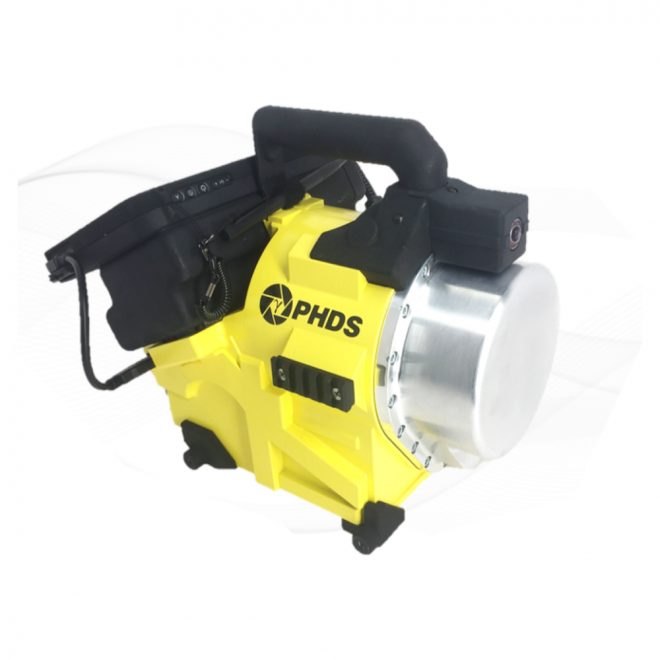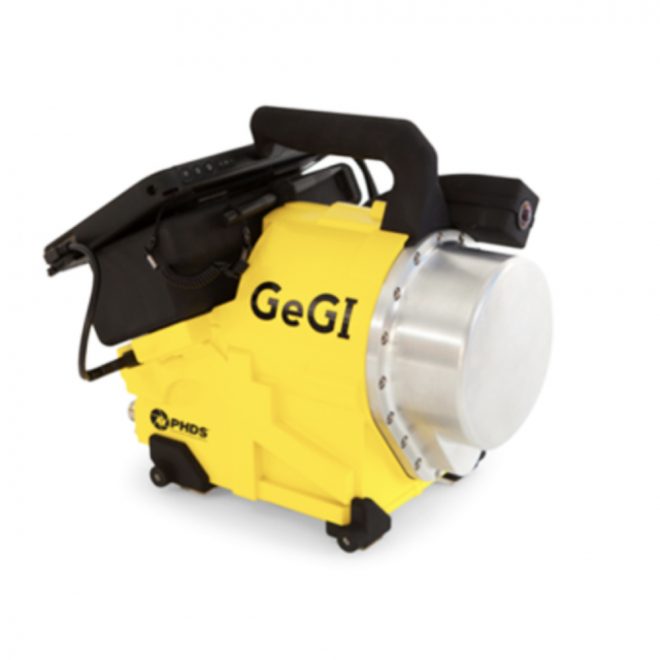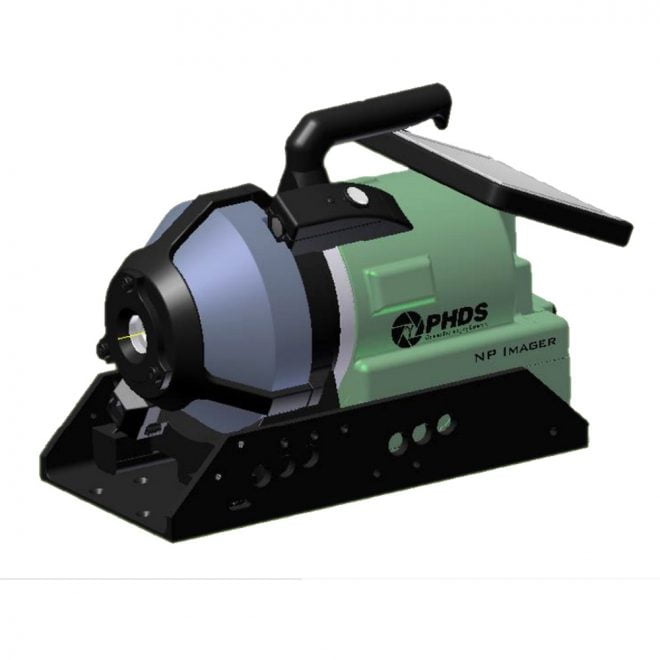-
PHDS Fulcrum HPGe Detector
PHDS Fulcrum HPGe Detector is the best user friendly and compact HPGe detector on the market. The onboard PHDS OMNI software application provides an intuitive interface for state-of-the-art isotope identification and real-time exposure rate calculation.
Application: Safe Standoff Detection, Nuclear Safeguards, and Security, Waste Management, Environmental Monitoring, Decontamination, and Decommissioning.
-
PHDS GeGI Gamma-Ray Detector
PHDS GeGI Gamma-Ray Detector is the world’s most sophisticated gamma-ray detector. Using many image modes, the GeGI can completely describe the surrounding radiological environment.
Applications: Military and Civilian CBRNE Operations, Nuclear Security, Nuclear Safeguards, Special Nuclear Material Analysis, and Decommissioning & Decontamination.
-
PHDS NP Imager Radiochemistry Imager
PHDS NP Imager Radiochemistry Imager measures the dynamics of radiochemical separation processes in real-time. Developed on a Small Business Innovation Research (SBIR) grant from the Department of Energy Office of Nuclear Physics (NP), the NP Imager focuses on the unique needs of radiochemists and technicians separating radioisotopes for radio-pharmaceuticals and other applications.
Applications: Radiopharmaceutical Process Monitoring, Radiochemical Separation Research and Development, Nuclear Physics Isotope Production, Nuclear Materials Management, Waste Management, Decontamination and Decommissioning.
Shop By Category
- Air Quality Monitors
- Ammeter and Voltmeter
- Calibrators
- Caliper
- Clean Room Instruments
- Data Loggers
- Digital Pressure Gauge
- Electronic Pressure Gauge
- Environmental Meters
- Fire and Safety
- Flameproof Instruments
- Gas Detectors
- Gas Detectors
- Gas Detector Tubes
- Air Capture Hood Meters
- Air Flow Meters
- Air Velocity Transmitters
- Air Flow
- Air Quality-PM2.5/PM10/TVOC/HCHO
- Current/Voltage/Resistance/EMF
- Differential Pressure
- Dissolved Oxygen
- Distance
- Fire / Escape / Underwater
- Gases
- Airborne Particle Counters
- Analog Pressure Gauges
- Digital Pressure Controllers
- Digital Pressure Indicators
- Digital Pressure Transmitters
- Clamp Meter
- Dissolved Oxygen Meters
- Distance Meters
- Gauss Meters
- Data Loggers
- Differential Pressure
- Differential Pressure Controllers
- Differential Pressure Indicators
- Differential Pressure Transmitters
- Digital Vacuum Controllers
- Digital Vacuum Indicators
- Digital Vacuum Transmitters
- Dosimeter
- Gamma Camera
- Fixed Gas Detector



